Role Holy Roman Empress | Name Bianca Sforza | |
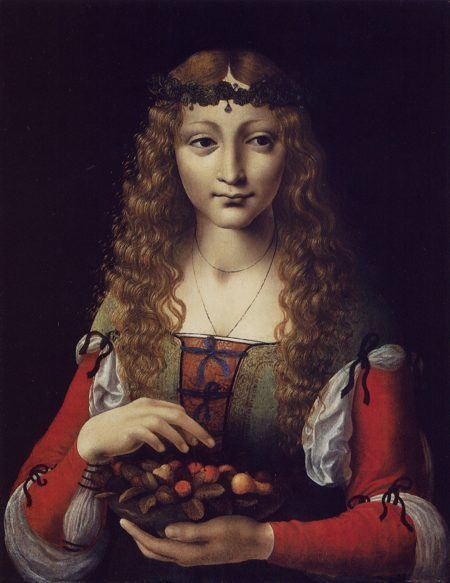 | ||
Full name Bianca Maria Sforza Tenure 16 March 1494 – 31 December 151016 March 1494 – 31 December 1510 Tenure 1508 – 31 December 1510 Parents Galeazzo Maria Sforza, Bona of Savoy Cousins Francesco II Sforza, Bianca Giovanna Sforza, Maximilian Sforza, Giovanni Paolo I Sforza Similar People Galeazzo Maria Sforza, Giovanni Ambrogio de Predis, Maximilian I - Holy Roman E, Gian Galeazzo Sforza, Bianca Maria Visconti | ||
Bianca Maria Sforza (5 April 1472 – 31 December 1510) was a Queen of the Romans and Holy Roman Empress as the second spouse of Maximilian I, Holy Roman Emperor. She was the eldest legitimate daughter of Galeazzo Maria Sforza, Duke of Milan, by his second wife, Bona of Savoy.
Contents
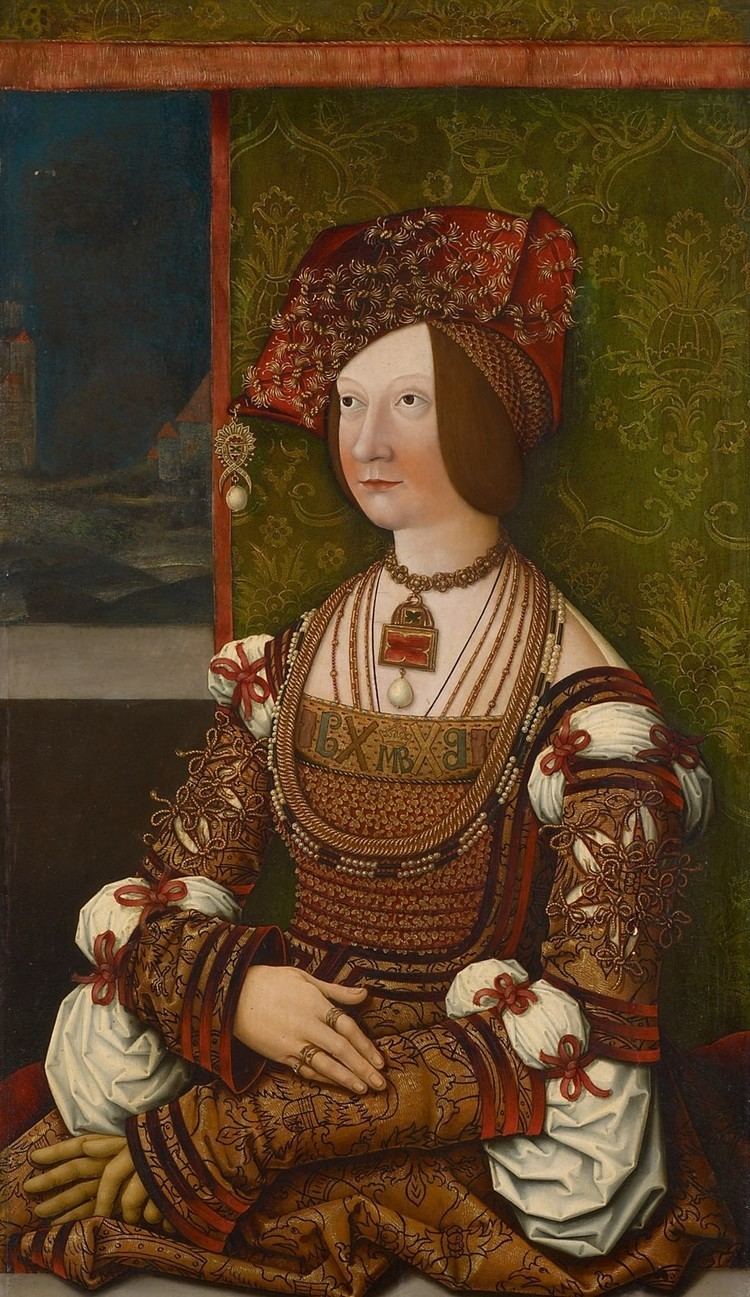
Bianca Maria Sforza, Holy Roman Empress
Life
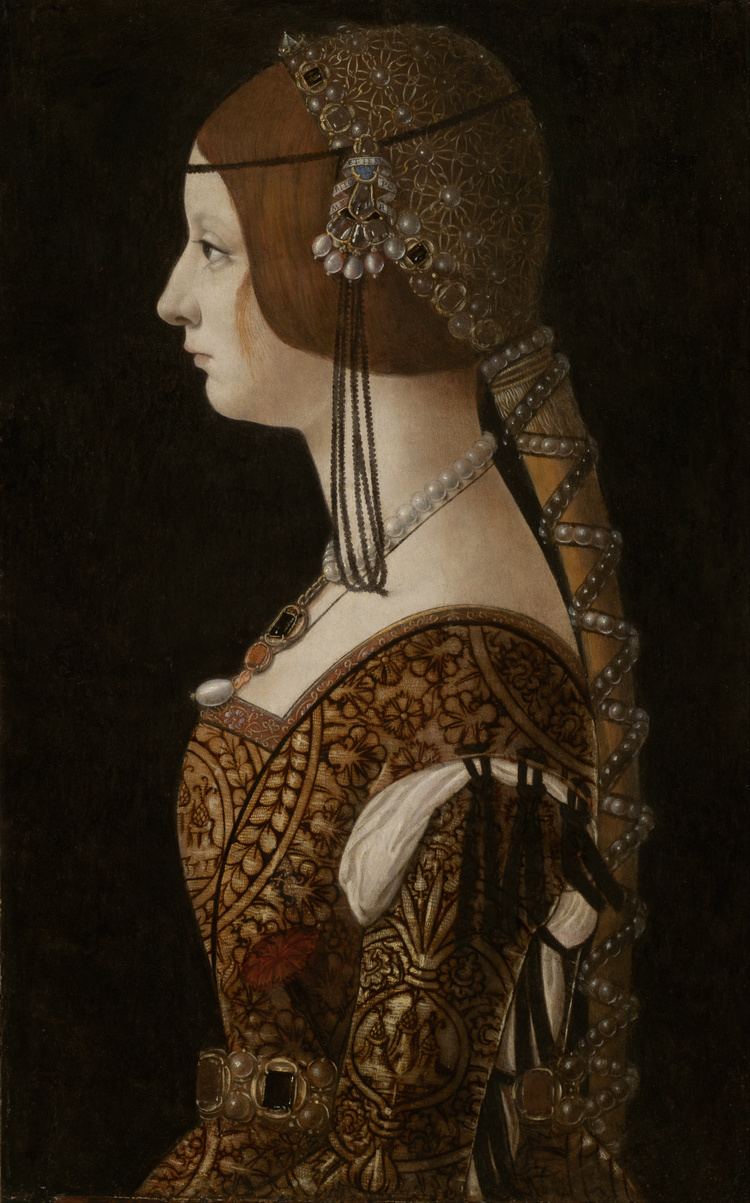
Bianca was born in Pavia as the eldest daughter of Galeazzo Maria Sforza, Duke of Milan, by his second wife, Bona of Savoy. Bianca's paternal grandparents were Francesco I Sforza and Bianca Maria Visconti, for whom she was named.
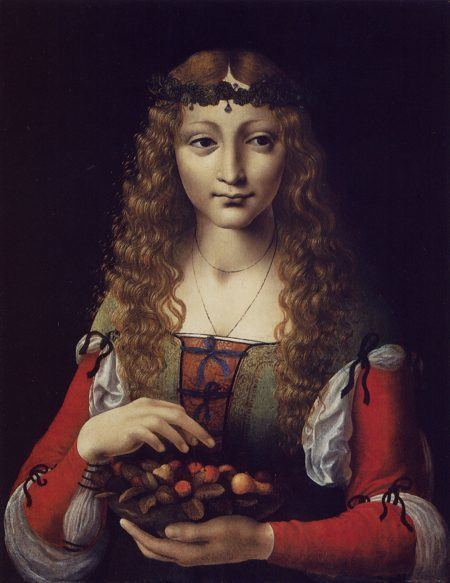
When Bianca was not yet five years old, her father was assassinated inside the Church of Santo Stefano in Milan on 26 December 1476, which was the Feast Day of St. Stephen. He was stabbed to death by three high-ranking officials of the Milanese court.
First marriage
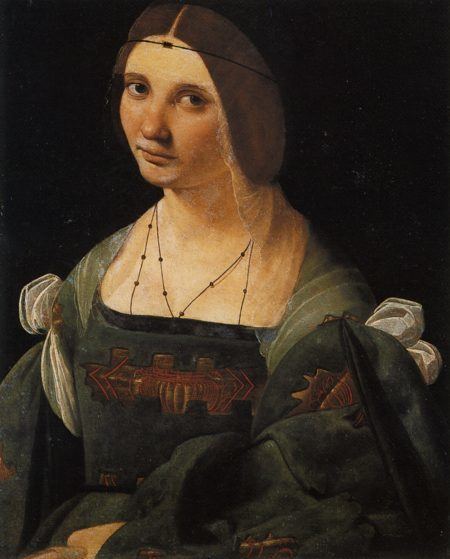
On 6 January 1474 the 21-months-old Bianca married her first cousin Philibert I, Duke of Savoy, the son of her uncle Amadeus IX of Savoy, and Yolande of France. Duke Philibert I died in the spring of 1482, leaving Bianca a widow at the age of ten. She returned to Milan, under the tutelage of her uncle Ludovico Il Moro, who cared little about her education and allowed her to indulge her own interests, mainly needlework.
Betrothals

Three years later, on 31 July 1485, the engagement between Bianca and Janus Corvinus, the only (though illegitimate) son of King Matthias of Hungary was formally announced. With this marriage, the Hungarian ruler wanted to secure his son's future inheritance of Hungary and Bohemia and to make him Duke of Austria. The marriage by proxy was signed on 25 November 1487, and according to the terms of the contract, Bianca received several Hungarian counties. However, due to the opposition and intrigues of Queen Beatrix, wife of Matthias, the formal marriage never took place. In March 1492 a marriage between Bianca and King James IV of Scotland was considered, but the idea was soon abandoned.
Queen and Empress

On 16 March 1494 in Hall, Tyrol, she married for the second time, to the King of the Romans, Maximilian I, who had been a widower since the death of his first wife Mary of Burgundy, who was fatally injured on 27 March 1482 after falling from her horse. Bianca's second marriage was arranged by her uncle, who wanted recognition and the title of Duke confirmed by the Emperor; in exchange, the Emperor received a large dowry along with Bianca. Her magnificent retinue on her way to her wedding aroused much attention.
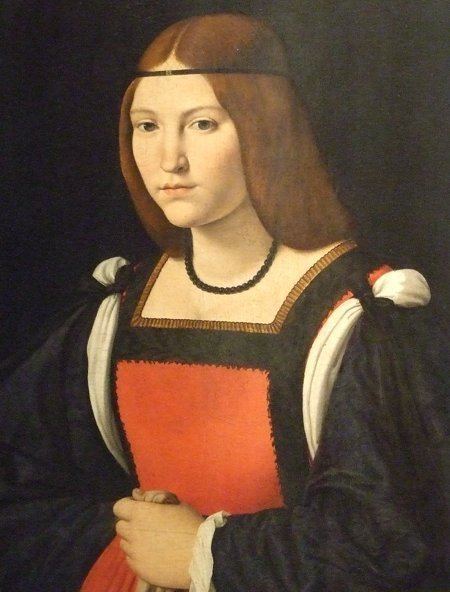
At her wedding, Bianca wore a bodice "with eighty pieces of the jeweler's art pinned thereon, with each piece consisting of one ruby and four pearls". She also brought her husband a rich dowry of 400,000 ducats, and through his marriage, Maximilian was able to assert his right to the Imperial overlordship of Milan. This angered Anne of France, regent of France for her brother King Charles VIII, and brought about French intervention in Italy, thus inaugurating the lengthy Italian Wars.
The union was unhappy: shortly after the consummation of the marriage, Maximilian complained that Bianca may have been more beautiful than his first wife but was not as wise. It was impossible for the young bride to win the affection of her husband, who considered her too uneducated, talkative, naive, wasteful with money, and careless. He did wish to have children with her, but all their attempts failed: despite Bianca's several pregnancies, none produced a living child. She very much liked his two surviving legitimate children (Philip the Handsome, who married Joanna of Castile, and Archduchess Margaret of Austria, who first married John, Prince of Asturias, and later Philibert II, Duke of Savoy), but was criticized for forgetting her dignity when she sat on the floor with them to play.
After 1500, Maximilian lost all interest in Bianca. She lived with her own court of Milanese people in various castles in Tyrol. On several occasions he left her behind as security when he could not pay for his rooms on trips.
Maximilian took the title of Holy Roman Emperor Elect in 1508. Bianca was, by marriage, Empress of the Holy Roman Empire.
Bianca Maria Sforza died at Innsbruck on 31 December 1510. She was buried at Stams. Her husband did not attend her funeral or even dedicate a gravestone to her.
A noteworthy portrait of Bianca Maria Sforza by Ambrogio de Predis hangs in the National Gallery of Art of the United States in Washington, D.C.
